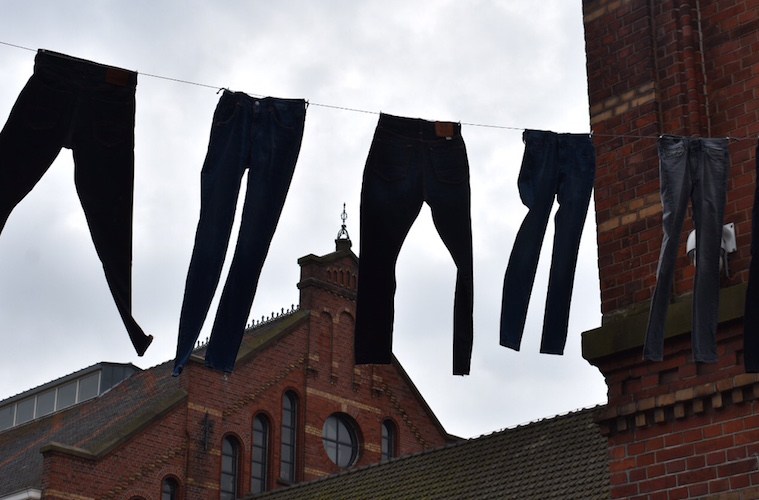
TAKEAWAYS FROM TRANSFORMERS
From fiber companies to designers, the denim industry came together in Amsterdam on Friday for Kingpins Transformers: The Cost of Sustainability. Experts and innovators from all along the denim supply chain discussed the opportunities and costs of making the denim business truly sustainable.
Here’s a roundup of some of the hot topics.
Cost doesn’t mean expensive
“Don’t ask why. Ask how,” suggested writer Paulina Szmydke-Cacciapalle. Most of the supply chain believes cost is the reason sustainability is not prominent in fashion, but Szmydke-Cacciapalle said how much more is usually just cents. Through smart design that reduces waste and pollution and smart technology, like Candiani’s water-saving Kitotex technology, she said the industry can actually afford sustainability. Szmydke-Cacciapalle pointed out that sustainability can pay for itself, adding that companies with high ratings for CSR and ESG factories have lower costs of debt and equity.
Lots of baby steps can make an impact
“It’s a marathon, not a sprint,” said Kristin Kimm, Target senior designer of denim, about Target’s mission toward more sustainable sourcing and manufacturing processes. “It’s ever-changing with new technology, I don’t know if there’s ever going to be a finish line,” she added.
For Target, which generates over half a billion U.S. dollars in denim sales each year, denim was an obvious place to take start taking sustainable steps. The U.S. retailer doesn’t promote every one of its sustainable initiatives, but Kimm said it has had some big wins. Every jean Target designs and sources is built with one or more sustainable attributes. By using recycled polyester in denim, Target has saved over 35 million plastic bottles from landfills and oceans. The company is also able to quantify its water savings year over year, working with vendors to reduce water in its washes, and transition to safer chemistries. As a result, Target has gained transparency to its matrix, allowing Target’s design and sourcing team to make more mindful decisions.
Cotton choices have long-term effects
The benefits of the Better Cotton Initiative (BCI) extend beyond the environment. Alan McClay, Better Cotton Initiative CEO, estimates that by the end of 2016, BCI made up 12 percent of global cotton production, meaning farmers were using less fertilizer, pesticides and managing water better. “As yields go up, farmers’ income goes up,” he said. Kingpins Founder Andrew Olah pointed out that a lot of work remains. “It’s atrocious that 78 percent of cotton is not sustainable,” he said.
There are no short cuts
“We are the grape in red wine,” quipped Andreas Dorner, Lenzing global marketing director. Lenzing introduced Refibra™ branded lyocell fibers in February. The fiber, made from cotton scraps and wood, costs more than TENCEL® branded lyocell fibers, but Dorner noted that end users are willing to pay 5-7 percent more for a sustainable product.
It’s a trade off that Lenzing stands behind. Refibra™ fibers were developed after years of research and development. As the apparel industry moves forward with sustainability initiatives, the challenge becomes who will bear the cost burden for developments. The process also cost Lenzing ten times more than it had planned. “We had to develop the whole process and machinery. There is no balance sheet about the costs of environmental damage,” he said……
Read More at Rivet Magazine
From mill to runway, the online source for denim news-http://www.rivetandjeans.com






